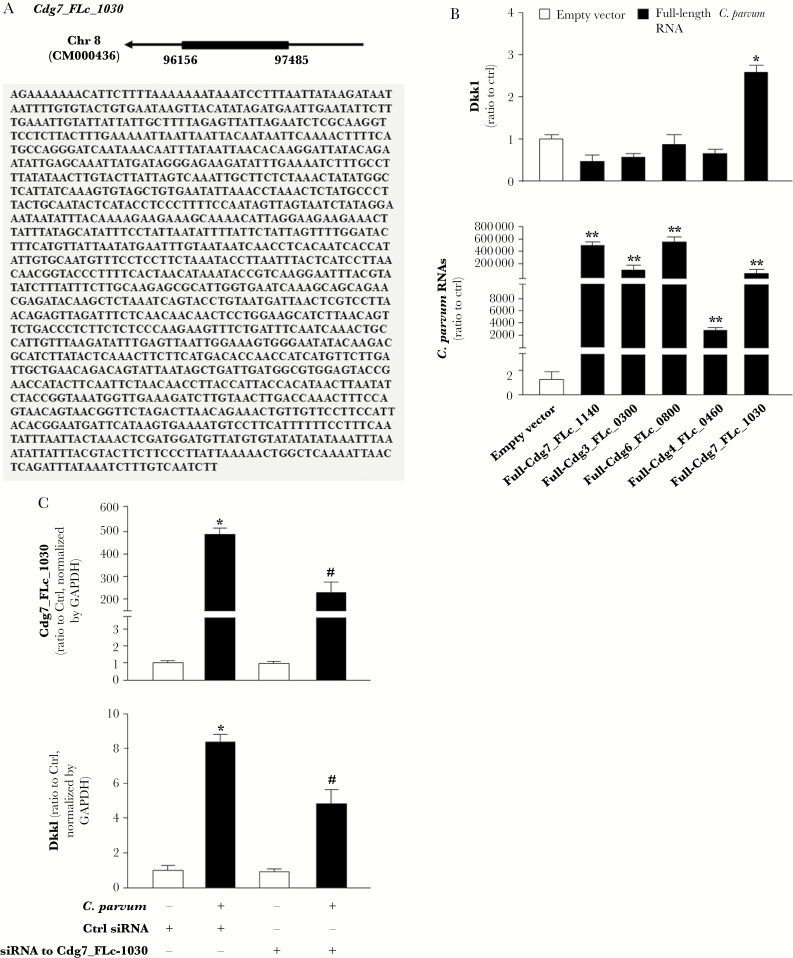Figure 4.
Induction of the Dkk1 gene in epithelial cells following Cryptosporidium parvum infection is associated with delivery of Cdg7_FLc_1030 into the host cells. A, Chromatic location and sequence of the Cdg7_FLc_1030 gene in C. parvum. B, Expression of Full-Cdg7_FLc_1030, but not other parasite RNAs, resulted in induction of Dkk1 expression in IEC4.1 cells. IEC4.1 was transfected with the constructs expressing various full-lengths of parasite RNAs for 48 hours. Cells transfected with the empty vector were used as the control. Whole-cell extracts were collected and expression levels of corresponding parasite RNAs and Dkk1 were measured with real-time PCR. C, Inhibition of Cdg7_FLc_1030 in host cells by the siRNA treatment attenuated the induction of Dkk1 following C. parvum infection. IEC4.1 cells were treated with an siRNA to Cdg7_FLc_1030 for 12 hours and then exposed to C. parvum infection for additional 24 hours. A nonspecific scrambled siRNA was used as the control (Ctrl). Contents of Cdg7_FLc_1030 and Dkk1 cells were quantified by real-time PCR. Data represent means ± SEs from 3 independent experiments. *P < .01 ANOVA versus noninfected cells treated with the control siRNA or empty vector controls; #P < .01 ANOVA versus infected cells treated with the control siRNA.

